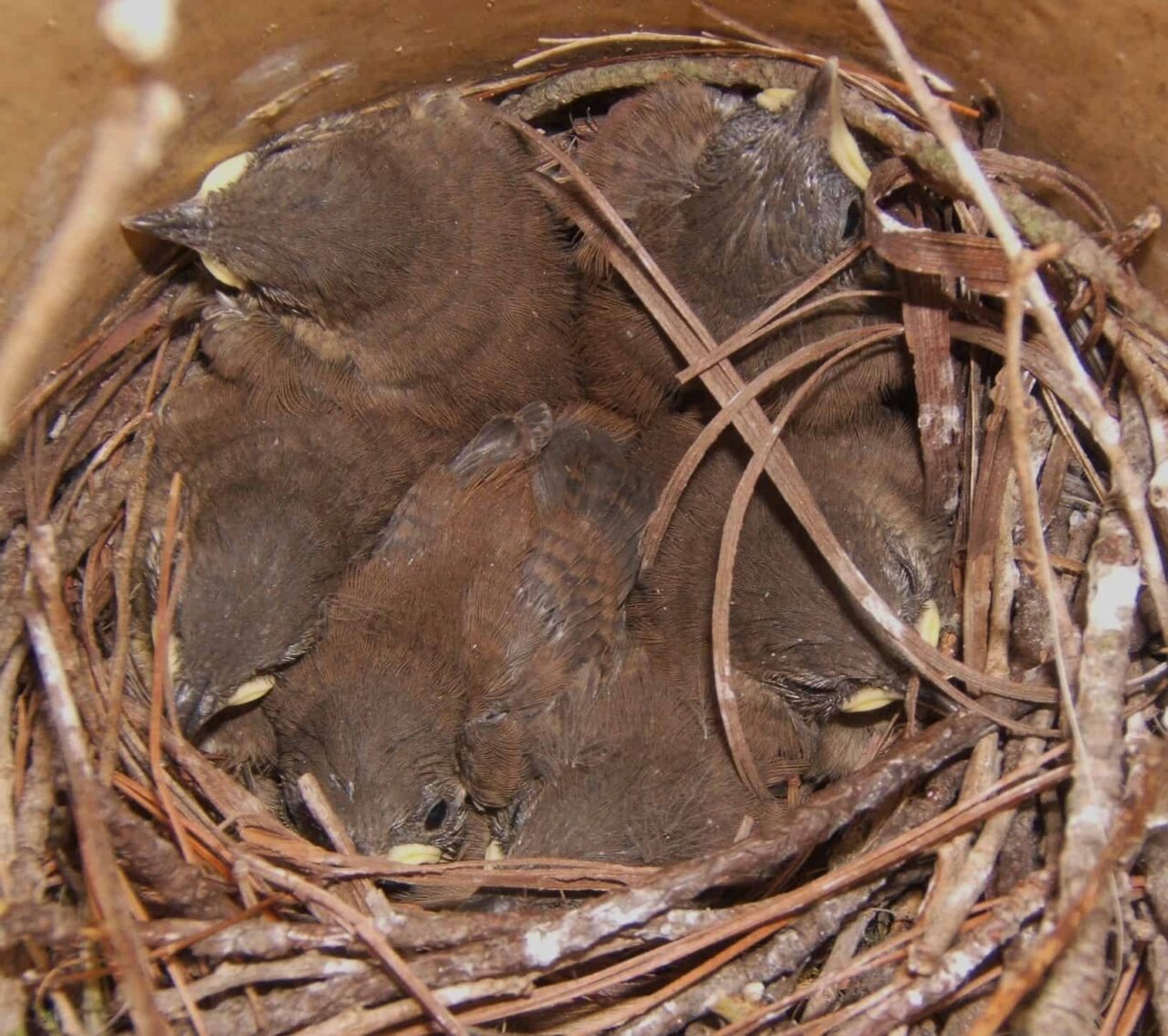After I finished my eighth grade academic year at school, I built my first bird houses that I nailed to a hand full of trees in my neighborhood. I enjoyed watching House Sparrows and House Wrens going in and out of my creations, but I had mounted my boxes too high on the trees for monitoring to be practical.
During my first year of teaching ninth-grade physical science, a neighbor lent me an article that promoted bluebird conservation and I launched my life-long hobby of bluebird trail conservation that resulted with me seeing my first bluebirds fly from their boxes when I was 23 years old. Also, some of my first boxes in 1968 also raised House Wrens.
At the conclusion of the 2021 season, and during the last 54 seasons, my boxes have raised 12,103 bluebirds and 12,506 House Wrens. At the beginning of the 1968 season, I started to design four paper form sheets that make it simple to record trail data and summerize and analyze nest histories. The first was the trail data pad that recorded data from boxes in the field. Data was then transferred to the trail data sheet that had 25 rows, one row for each box. Data was then transferred from the data pad to the box data sheets, one sheet for each trail box. At the end of the season, all data were copied onto Master Data sheets that had columns for data for each nestbox including the box number, species of a nest, initial egg date, number of eggs, number hatched, number fledged, and reasons and comments.
Well, after fifty-four nesting seasons, something new happened for the first time: I was attacked and hit twice by a tiny House Wren. The little guy or gal landed on my hat-covered head, flew off, circled and returned for a second landing. I don’t know if it pecked my head since my hat may have been a shield.
My arm went up and my hand intercepted several additional swoops before the attacker retreated. Then, I disengaged the box’s screw and counted the wren nestlings and checked the paired Tree Swallow box nearby before leaving. On my way from the site, I thought of wrens spearing the eggs of others with their sharp bills and I couldn’t avoid thinking of my eyes. Could a wren manage to thrust its bill under my glasses to spear my eye? Ridiculous, maybe, but my primate instincts came to life. If the wren attacked again, it was going to deal with a more primitive creature.
Nine days later, the tiny aggressor attacked again, but no contact occurred since the small aggressor was met by a loud, chest beating, chimp-chanting, animated primate, with his right arm stretched out to intercept the aggressive wren with five fanned-out fingers. Yes, I successfully defended myself while avoiding any harm to the wren.
So, what was with the tiny aggressor? There is no way to come up with an absolute explanation, but I have been thinking of the incident and I would like to offer some ideas.
First, the wren’s box is B-119 that is paired five yards away from B-20. The area had not been brush hogged during the previous fall due to other maintenance needs throughout the state’s parks, etc. Delaware Park’s crew had kept paths mowed to all boxes during the nesting season which I greatly appreciated.
For the House Wrens, the sprouting of alien woody plants was greatly appreciated since it enabled them to seek cover to avoid direct dives by Tree Swallows. B-119 had one wren egg on May 10, and the wrens successfully fledged seven young by June 13. At no time during this first clutch did I feel victimized by hostile wren behavior.
B-119 had a new wren egg on July 3, and five siblings fledged around August 3 making a triumphant nesting season that produced two new families.
As for B-20, Swallows started a nest by April 12 and I counted three eggs on May 10. The clutch grew to seven eggs and three were hatching on May 30. Then, no young or eggs were in the nest on June 6, a possible result of the neighboring wrens doing their thing.
A new swallow clutch began on June 14, and after growing to five eggs, all failed to hatch. Only three eggs remained on July 30, and all were gone by August 2.
I believe that the paired boxes were in an avian war zone, and I know that Tree Swallows are usually dominant when it comes to competition from wrens, but swallows are also dealing with a shortage of flying insects. So, I suspect that my attacker had been attacked daily by the neighboring swallows which would have raised the hormone levels in the wrens, contributing to the aggressive behavior of my attacker. After all, my adrenalin count was raised once I became a targeted victim.
Going back to the wren’s first attack on July 21, the wren’s nest held five three-day-old nestlings that would have contributed to the wren’s determination to protect its nest. On July 30, the wren family was super healthy and had the same dedicated parent that enjoyed swooping at its landlord.
Something really strange happened on the day after the Thanksgiving holiday. I had lots on my mind, but the word “imprinting” popped into my conscience mind. I immediately thought of the aggressive wren. Imprinting was researched and described by Konrad Lorenz in 1937. Precocial birds leave their nests after hatching since they can climb, walk, and swim, and birds such as ducks and geese learn at an early age to follow moving objects, and with adequate knowledge, you can convince young ducks and geese to follow you.
Wrens are not precocial. Their young are altricial and they hatch at a very early stage of development. After hatching, the bare wrens stay in their nest for up to 16 days as they grow feathers and fledge once they can fly. Can wrens imprint or bond with anything beyond their parents?
Numerous times, over many years, I have fostered orphaned House Wrens for the Ohio Wildlife Center, the very busy wildlife rehabilitation hospital and facility in Columbus and Powell. Most of my fostering has taken place in nestboxes in Delaware State Park. Usually, I tried to foster only two wren orphans per host nest.
The most important fact that might involve imprinting is that the orphans are usually hand fed and cared for by OWC volunteers over a period of days. Sometimes, it was days before I could check for possible host families in park boxes before I could answer requests from the OWC. So, had the aggressive wren that attacked me bonded with our species as it was cared for at the rehab center? Perhaps, the aggressive wren was only trying to greet me. Yes, I think that would be really weird. On the other hand, birds attack members of their own species when they approach an active nest that is not theirs. So, imprinting could have occurred and still contributed to the aggressive behavior aimed at me.
Whatever the real story is, I look forward to next year’s nesting season and I hope to encounter the tiny aggressive wren. Such events and personalities are what makes bluebirding a fantastic and rewarding hobby.
Looking forward, Delaware Park’s maintenance crew has completed brush hogging for next year and there will be more habitats for bluebirds and Tree Swallows. No brush hogging will take place during the summer which will give prairie plants, butterflies, and other grassland species a good chance to complete their life cycles while entertaining park visitors.
During the 2021 nesting season, the park’s 166 nestboxes produced 127 Eastern Bluebirds, 309 Tree Swallows, 656 House Wrens, five Carolina Wrens, and 13 Carolina Chickadees. Let’s hope that the expanded brush hogging will allow our avian friends to surpass 2021’s totals.
Conserve on!



